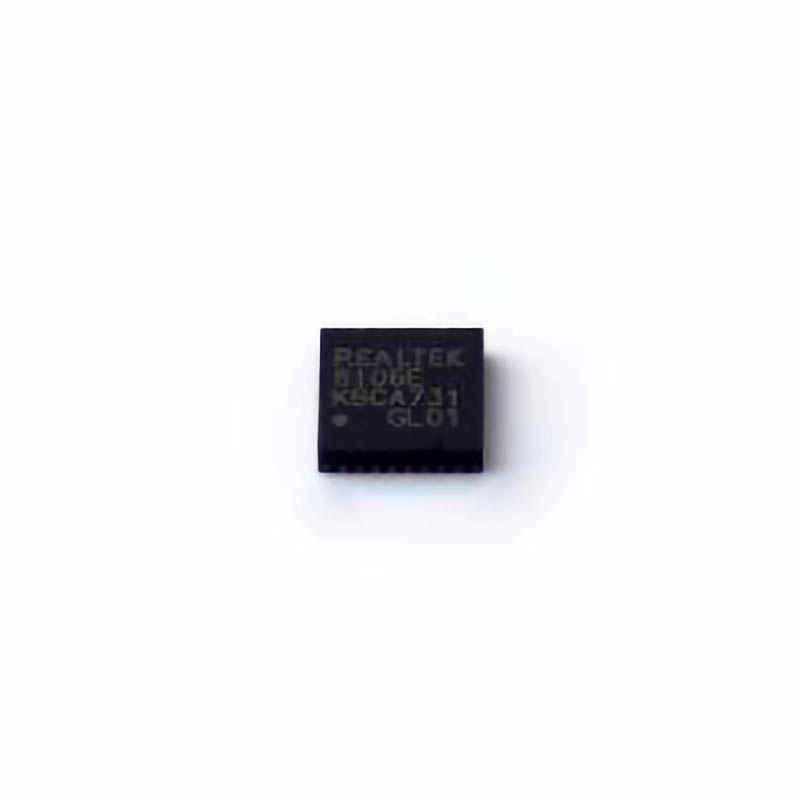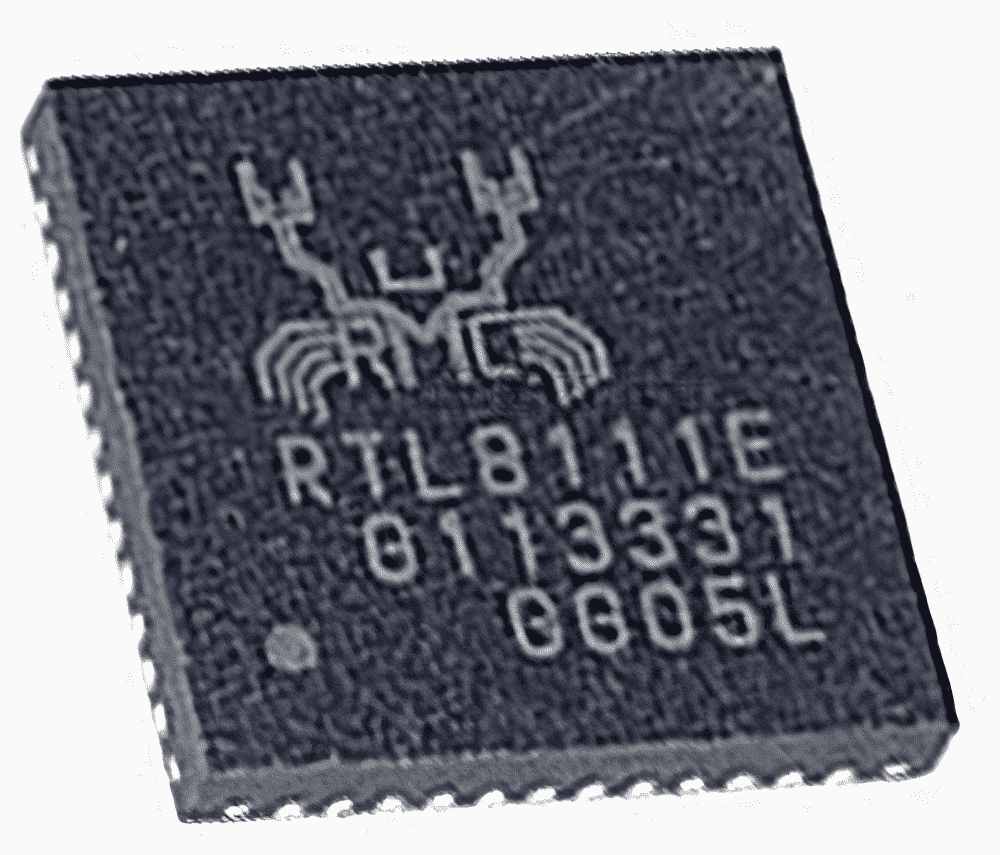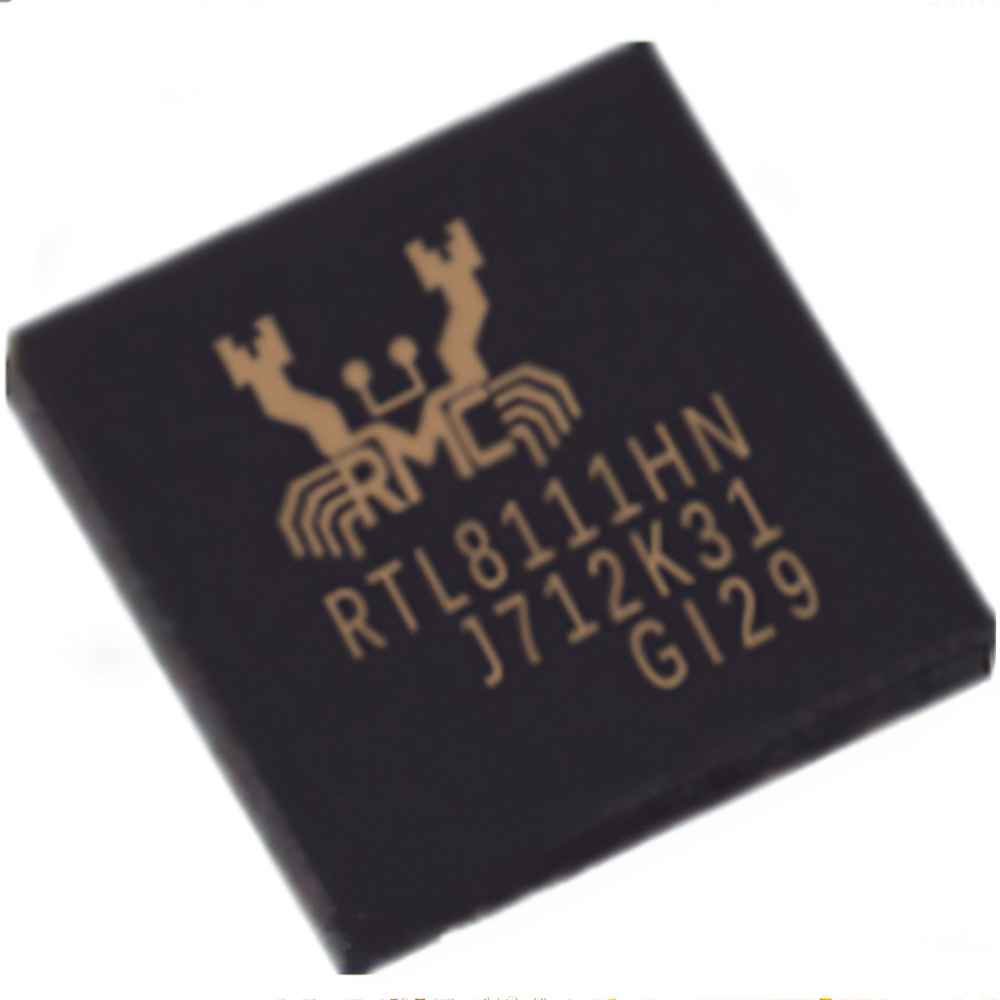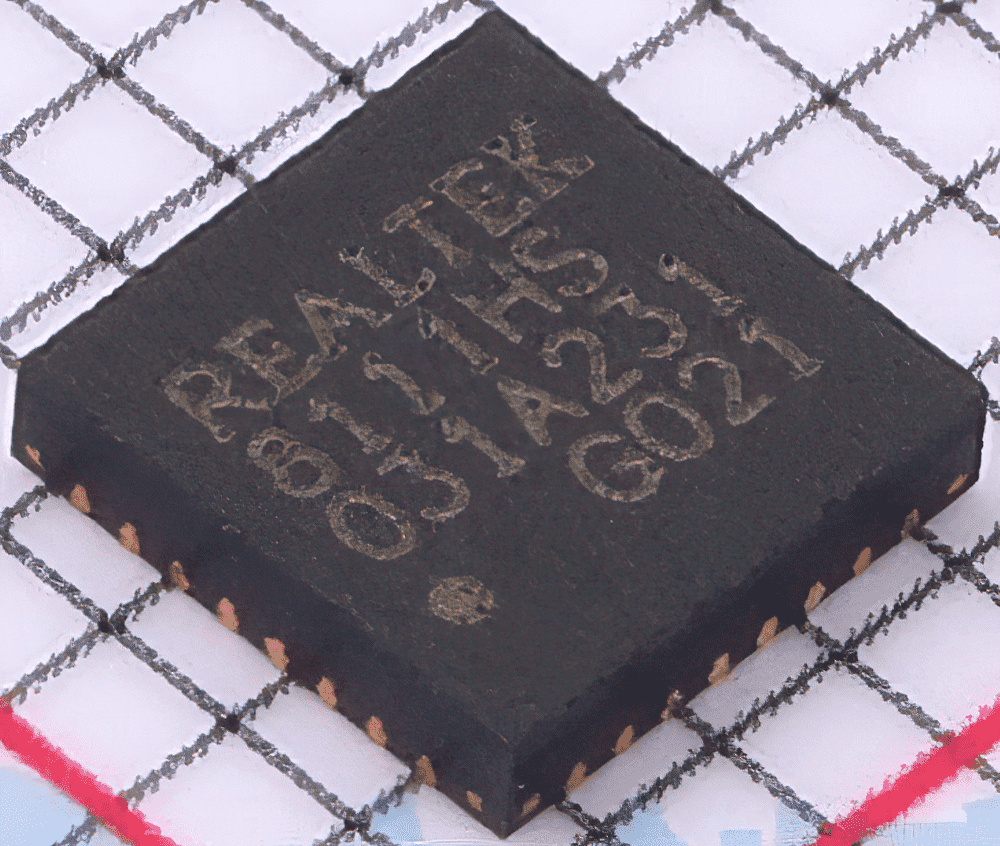REALTEK
图片可能具有代表性。
产品详情请参阅规格.
产品详情请参阅规格.
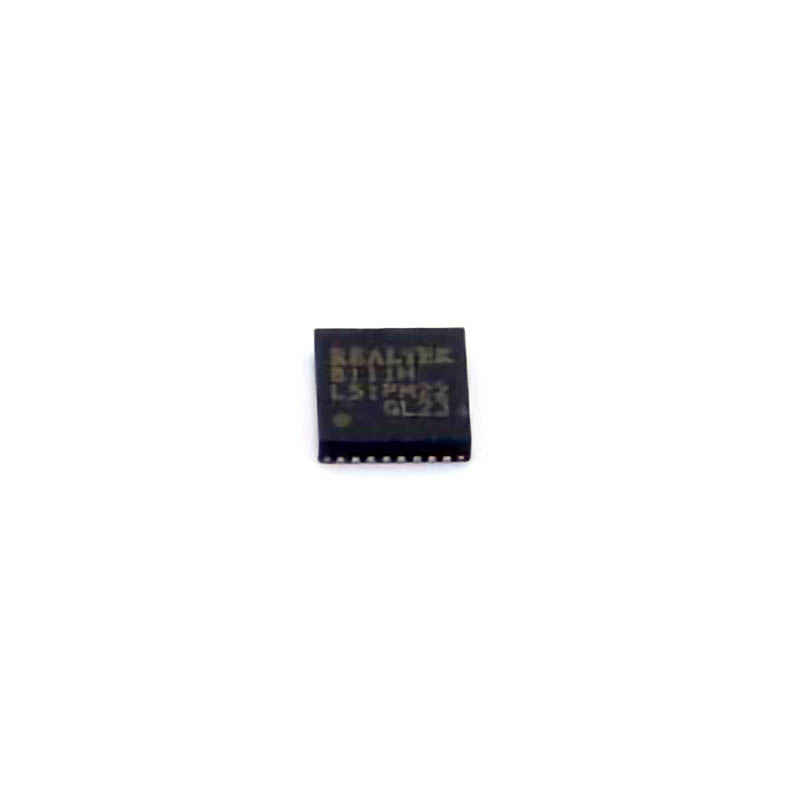
RTL8111H-CG
RTL8111H-CG
型号
RTL8111H-CG
类目
Communication Interface Chips/UART/485/232 > Ethernet Chips
制造商/品牌
REALTEK
封装
QFN-32-EP(4x4)
包装
tray
包裹数量
490
简介
请求报价
请填写所有必填字段并点击“提交”,我们将在12小时内通过电子邮件与您联系。如果您有任何问题,请留言或发送电子邮件至 2762329346@qq.com,我们将尽快回复。
有货 53346 PCS
联系信息

more_pkgimg
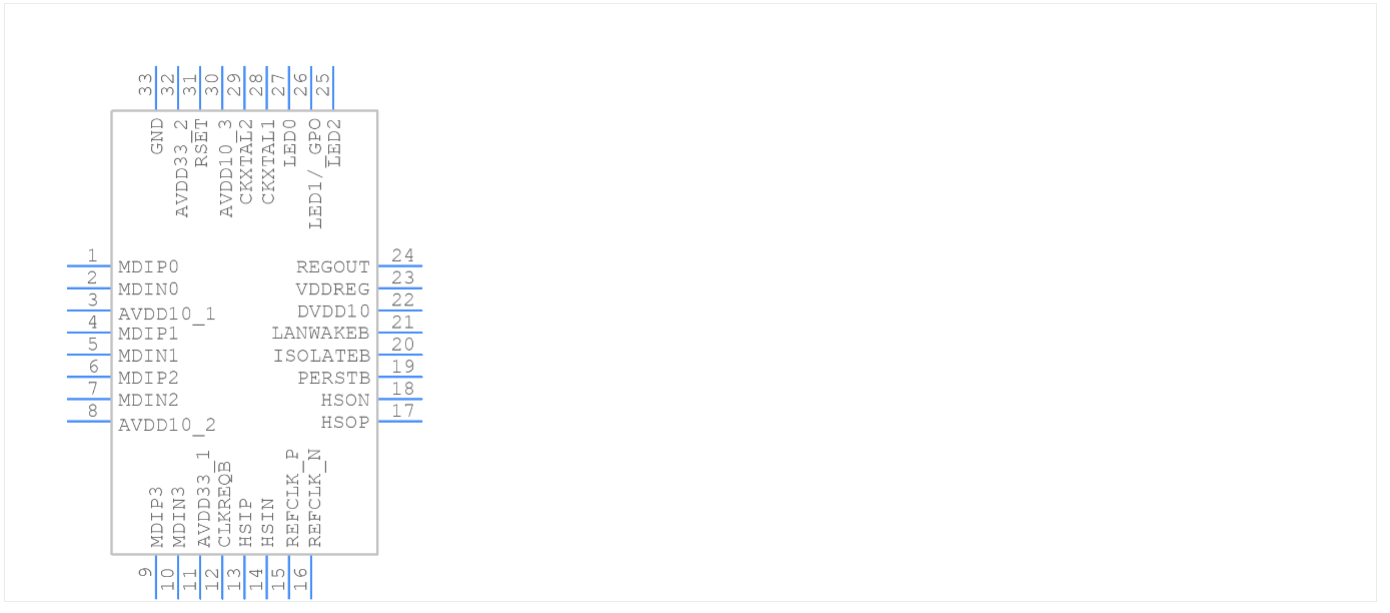
more_schimg

more_3dimg
more_spec
RTL8111H-CG Product details
General Description
The Realtek RTL8111H-CG/RTL8111HS-CG 10/100/1000M Ethernet controller combines a triple-speed
IEEE 802.3 compliant Media Access Controller (MAC) with a triple-speed Ethernet transceiver, PCI
Express bus controller, and embedded memory. With state-of-the-art DSP technology and mixed-mode
signal technology, the RTL8111H/RTL8111HS offers high-speed transmission over CAT 5 UTP cable or
CAT 3 UTP (10Mbps only) cable. Functions such as Crossover Detection and Auto-Correction, polarity
correction, adaptive equalization, cross-talk cancellation, echo cancellation, timing recovery, and error
correction are implemented to provide robust transmission and reception capability at high speeds.
The RTL8111H/RTL8111HS supports the PCI Express 1.1 bus interface for host communications with
power management, and complies with the IEEE 802.3u specification for 10/100Mbps Ethernet and the
IEEE 802.3ab specification for 1000Mbps Ethernet. It supports an auxiliary power auto-detect function,
and will auto-configure related bits of the PCI power management registers in PCI configuration space.
The RTL8111H/RTL8111HS features embedded One-Time-Programmable (OTP) memory. The
RTL8111H provides a built-in LDO regulator, and the RTL8111HS provides a built-in switching
regulator.
Advanced Configuration Power management Interface (ACPI)—power management for modern
operating systems that are capable of Operating System-directed Power Management (OSPM)—is
supported to achieve the most efficient power management possible. PCI MSI (Message Signaled
Interrupt) and MSI-X are also supported.
In addition to the ACPI feature, remote wake-up (including AMD Magic Packet and Microsoft Wake-Up
Frame) is supported in both ACPI and APM (Advanced Power Management) environments. To support
WOL from a deep power down state (e.g., D3cold, i.e., main power is off and only auxiliary exists), the
auxiliary power source must be able to provide the needed power for the RTL8111H/RTL8111HS. To
further reduce power consumption, the RTL8111H/RTL8111HS also supports PCIe L1.Off and
L1.Snooze.
The RTL8111H/RTL8111HS supports ‘RealWoW!’ technology that enables remote wake-up of a sleeping
PC through the Internet. This feature allows PCs to reduce power consumption by remaining in low
power sleeping state until needed.
Note: The ‘RealWoW!’ service requires registration on first time use.
The RTL8111H/RTL8111HS supports Protocol offload. It offloads some of the most common protocols to
NIC hardware in order to prevent spurious wake-up and further reduce power consumption. The
RTL8111H/RTL8111HS can offload ARP (IPv4) and NS (IPv6) protocols while in the D3 power saving
state.
The RTL8111H/RTL8111HS supports the ECMA (European Computer Manufacturers Association) proxy
for sleeping hosts standard. The standard specifies maintenance of network connectivity and presence via
proxies in order to extend the sleep duration of higher-powered hosts. It handles some network tasks on
behalf of the host, allowing the host to remain in sleep mode for longer periods. Required and optional
behavior of an operating proxy includes generating reply packets, ignoring packets, and waking the host.
The RTL8111H/RTL8111HS supports IEEE 802.3az-2010, also known as Energy Efficient Ethernet
(EEE). IEEE 802.3az-2010 operates with the IEEE 802.3 Media Access Control (MAC) sublayer to
support operation in Low Power Idle mode. When the Ethernet network is in low link utilization, EEE
allows systems on both sides of the link to save power.
The RTL8111H/RTL8111HS is fully compliant with Microsoft NDIS5, NDIS6 (IPv4, IPv6, TCP, UDP)
Checksum and Segmentation Task-offload (Large send and Giant send) features, and supports IEEE 802
IP Layer 2 priority encoding and IEEE 802.1Q Virtual bridged Local Area Network (VLAN). The above
features contribute to lowering CPU utilization, especially benefiting performance when in operation on a
network server.
The RTL8111H/RTL8111HS supports Receive-Side Scaling (RSS) to hash incoming TCP connections
and load-balance received data processing across multiple CPUs. RSS improves the number of
transactions per second and number of connections per second, for increased network throughput.
The device features inter-connect PCI Express technology. PCI Express is a high-bandwidth,
low-pin-count, serial, interconnect technology that offers significant improvements in performance over
conventional PCI and also maintains software compatibility with existing PCI infrastructure.
The RTL8111H/RTL8111HS is suitable for multiple market segments and emerging applications, such as
desktop, mobile, workstation, server, communications platforms, and embedded applications.
General Description
The Realtek RTL8111H-CG/RTL8111HS-CG 10/100/1000M Ethernet controller combines a triple-speed
IEEE 802.3 compliant Media Access Controller (MAC) with a triple-speed Ethernet transceiver, PCI
Express bus controller, and embedded memory. With state-of-the-art DSP technology and mixed-mode
signal technology, the RTL8111H/RTL8111HS offers high-speed transmission over CAT 5 UTP cable or
CAT 3 UTP (10Mbps only) cable. Functions such as Crossover Detection and Auto-Correction, polarity
correction, adaptive equalization, cross-talk cancellation, echo cancellation, timing recovery, and error
correction are implemented to provide robust transmission and reception capability at high speeds.
The RTL8111H/RTL8111HS supports the PCI Express 1.1 bus interface for host communications with
power management, and complies with the IEEE 802.3u specification for 10/100Mbps Ethernet and the
IEEE 802.3ab specification for 1000Mbps Ethernet. It supports an auxiliary power auto-detect function,
and will auto-configure related bits of the PCI power management registers in PCI configuration space.
The RTL8111H/RTL8111HS features embedded One-Time-Programmable (OTP) memory. The
RTL8111H provides a built-in LDO regulator, and the RTL8111HS provides a built-in switching
regulator.
Advanced Configuration Power management Interface (ACPI)—power management for modern
operating systems that are capable of Operating System-directed Power Management (OSPM)—is
supported to achieve the most efficient power management possible. PCI MSI (Message Signaled
Interrupt) and MSI-X are also supported.
In addition to the ACPI feature, remote wake-up (including AMD Magic Packet and Microsoft Wake-Up
Frame) is supported in both ACPI and APM (Advanced Power Management) environments. To support
WOL from a deep power down state (e.g., D3cold, i.e., main power is off and only auxiliary exists), the
auxiliary power source must be able to provide the needed power for the RTL8111H/RTL8111HS. To
further reduce power consumption, the RTL8111H/RTL8111HS also supports PCIe L1.Off and
L1.Snooze.
The RTL8111H/RTL8111HS supports ‘RealWoW!’ technology that enables remote wake-up of a sleeping
PC through the Internet. This feature allows PCs to reduce power consumption by remaining in low
power sleeping state until needed.
Note: The ‘RealWoW!’ service requires registration on first time use.
The RTL8111H/RTL8111HS supports Protocol offload. It offloads some of the most common protocols to
NIC hardware in order to prevent spurious wake-up and further reduce power consumption. The
RTL8111H/RTL8111HS can offload ARP (IPv4) and NS (IPv6) protocols while in the D3 power saving
state.
The RTL8111H/RTL8111HS supports the ECMA (European Computer Manufacturers Association) proxy
for sleeping hosts standard. The standard specifies maintenance of network connectivity and presence via
proxies in order to extend the sleep duration of higher-powered hosts. It handles some network tasks on
behalf of the host, allowing the host to remain in sleep mode for longer periods. Required and optional
behavior of an operating proxy includes generating reply packets, ignoring packets, and waking the host.
The RTL8111H/RTL8111HS supports IEEE 802.3az-2010, also known as Energy Efficient Ethernet
(EEE). IEEE 802.3az-2010 operates with the IEEE 802.3 Media Access Control (MAC) sublayer to
support operation in Low Power Idle mode. When the Ethernet network is in low link utilization, EEE
allows systems on both sides of the link to save power.
The RTL8111H/RTL8111HS is fully compliant with Microsoft NDIS5, NDIS6 (IPv4, IPv6, TCP, UDP)
Checksum and Segmentation Task-offload (Large send and Giant send) features, and supports IEEE 802
IP Layer 2 priority encoding and IEEE 802.1Q Virtual bridged Local Area Network (VLAN). The above
features contribute to lowering CPU utilization, especially benefiting performance when in operation on a
network server.
The RTL8111H/RTL8111HS supports Receive-Side Scaling (RSS) to hash incoming TCP connections
and load-balance received data processing across multiple CPUs. RSS improves the number of
transactions per second and number of connections per second, for increased network throughput.
The device features inter-connect PCI Express technology. PCI Express is a high-bandwidth,
low-pin-count, serial, interconnect technology that offers significant improvements in performance over
conventional PCI and also maintains software compatibility with existing PCI infrastructure.
The RTL8111H/RTL8111HS is suitable for multiple market segments and emerging applications, such as
desktop, mobile, workstation, server, communications platforms, and embedded applications.
more_desctext
INTEGRATED 10/100/1000M ETHERNET CONTROLLER FOR PCI EXPRESS APPLICATIONS
Pin Count--------33
Part Category--------Integrated Circuit
Package Category--------Quad Flat No-Lead
Footprint Name--------Quad Flat No-Lead - 32-Pin QFN
Pin Count--------33
Part Category--------Integrated Circuit
Package Category--------Quad Flat No-Lead
Footprint Name--------Quad Flat No-Lead - 32-Pin QFN
download_pdf
more_faq
RTL8111H-CG Frequently Asked Questions (FAQs)
What is the recommended operating temperature range for the RTL8111H-CG?
The recommended operating temperature range for the RTL8111H-CG is 0°C to 70°C (commercial temperature range) and -40°C to 85°C (industrial temperature range).
How do I configure the RTL8111H-CG for Wake-on-LAN (WOL) functionality?
To configure the RTL8111H-CG for WOL, you need to set the WOL enable bit in the PMCSR (Power Management Control and Status Register) and configure the WOL pattern in the WOLPATR (Wake-on-LAN Pattern Register). You may also need to configure the system to send a magic packet to wake up the device.
What is the maximum cable length supported by the RTL8111H-CG?
The RTL8111H-CG supports a maximum cable length of 100 meters for 1000BASE-T and 100BASE-TX, and 200 meters for 10BASE-T.
How do I implement power management for the RTL8111H-CG?
The RTL8111H-CG supports various power management modes, including ACPI, PCI-PM, and ASPM. You can implement power management by configuring the PMCSR and PMCSR2 registers, and using the PCI-PM and ASPM protocols to control power states.
What is the maximum power consumption of the RTL8111H-CG?
The maximum power consumption of the RTL8111H-CG is approximately 1.2W in the active state and 100mW in the low power state.
What is the recommended operating temperature range for the RTL8111H-CG?
The recommended operating temperature range for the RTL8111H-CG is 0°C to 70°C (commercial temperature range) and -40°C to 85°C (industrial temperature range).
How do I configure the RTL8111H-CG for Wake-on-LAN (WOL) functionality?
To configure the RTL8111H-CG for WOL, you need to set the WOL enable bit in the PMCSR (Power Management Control and Status Register) and configure the WOL pattern in the WOLPATR (Wake-on-LAN Pattern Register). You may also need to configure the system to send a magic packet to wake up the device.
What is the maximum cable length supported by the RTL8111H-CG?
The RTL8111H-CG supports a maximum cable length of 100 meters for 1000BASE-T and 100BASE-TX, and 200 meters for 10BASE-T.
How do I implement power management for the RTL8111H-CG?
The RTL8111H-CG supports various power management modes, including ACPI, PCI-PM, and ASPM. You can implement power management by configuring the PMCSR and PMCSR2 registers, and using the PCI-PM and ASPM protocols to control power states.
What is the maximum power consumption of the RTL8111H-CG?
The maximum power consumption of the RTL8111H-CG is approximately 1.2W in the active state and 100mW in the low power state.
关键词 RTL8111H-CG
RTL8111H-CG 电子元件
RTL8111H-CG 销售
RTL8111H-CG 供应商
RTL8111H-CG 分销商
RTL8111H-CG 数据表
RTL8111H-CG 图片
RTL8111H-CG 报价
RTL8111H-CG 提供
RTL8111H-CG 最低价格
RTL8111H-CG 搜索
RTL8111H-CG 购买
RTL8111H-CG 芯片
×
![]()





